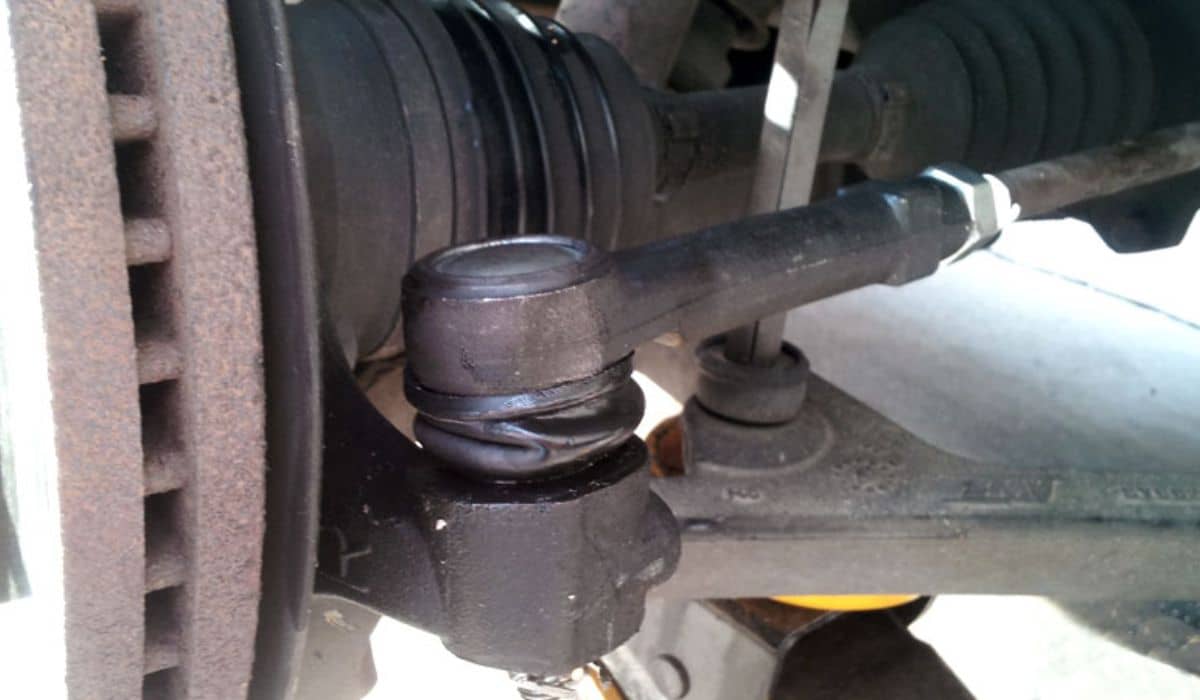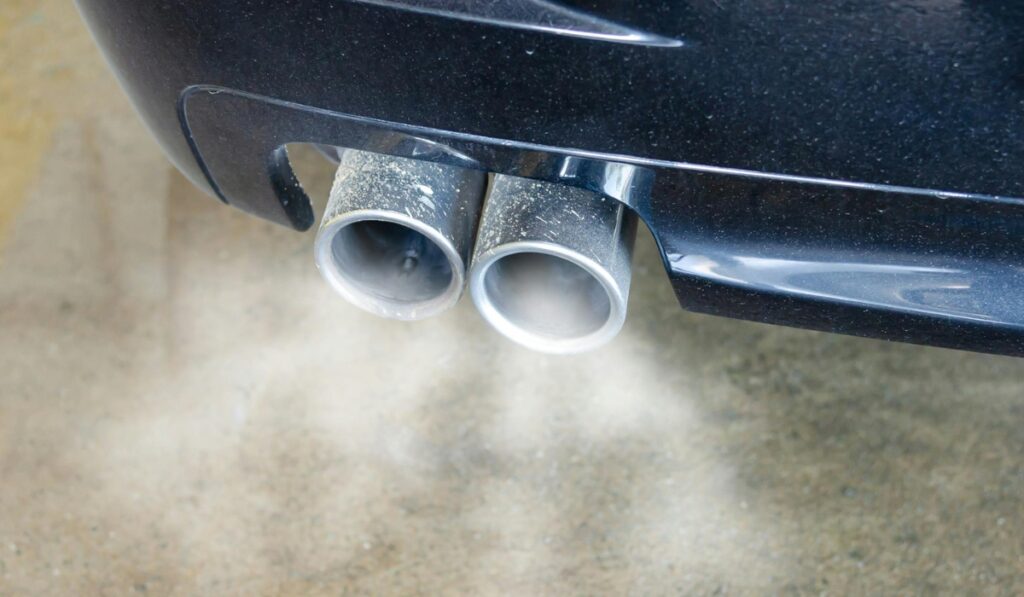It’s important to spot vehicle problems early to ensure smooth and safe journeys. The inner tie rod is an important part of your car’s steering system, linking the outer tie rod to the steering rack.
Over time, wear and tear can cause problems with the inner tie rod, leading to various symptoms of failure. By identifying these symptoms of bad inner tie rod early, you can take action to fix the problem and keep your vehicle reliable.
What’s an Inner Tie Rod?
To discuss failure symptoms, let’s first understand the inner tie rod’s function. Inner tie rods are important parts of a car’s steering and suspension system. Inner tie rods are found at the ends of the steering rack. They transfer force from the steering centre link or rack gear to the steering knuckle, allowing the wheels to turn.
The tie rod can loosen or break over time due to wear and tear. When this occurs, the wheels become uncoordinated, endangering the vehicle and its passengers. It’s important to notice warning signs early and take action quickly.
Identifying symptoms of bad inner tie rod
• Uneven tyre wear :
Uneven tyre wear may indicate misalignment, possibly caused by a faulty inner tie rod. If your tyre wears down faster on the inside or outside, contact a mechanic right away for an inspection.
• Poor vehicle alignment :
A failing tie rod can make the vehicle pull to one side while driving or braking. The veering may be caused by a faulty inner tie rod affecting tyre alignment.
• Steering looseness :
Loose steering or steering play is a common sign. A loose or unresponsive steering wheel may suggest a faulty inner tie rod.
• Unusual noises :
Unusual sounds such as squeaks, knocks, or clunks when turning the steering wheel may indicate a problem with the inner tie rod.
• Inaccurate steering :
Worn inner tie rods can make the wheel jerk and affect steering responsiveness, especially during turns or adjustments.
What are other symptoms of a failing inner tie rod
Steering wheel has too much play
A loose steering wheel is a common symptom of a faulty inner tie rod. Worn or damaged inner tie rods can cause steering system looseness or play. You may notice some movement or play in the steering wheel, making it feel less responsive and precise.
The driver may struggle to control the vehicle, especially when turning or going around curves. Promptly address this symptom to avoid unsafe driving conditions and potential loss of control caused by excessive play in the steering wheel.
If you notice this symptom, get your vehicle inspected by a professional to check the inner tie rod and fix the issue.
Uneven or excessive tyre wear can occur
Uneven or excessive tyre wear is a key symptom of a bad inner tie rod. This can appear as bald spots, cupping, or feathering on the tyre tread. A failing inner tie rod can cause alignment issues, resulting in uneven weight and pressure on the tyres.
This can lead to uneven tyre wear, resulting in noticeable patterns. Regularly inspect your tyres for uneven or excessive wear to check for potential inner tie rod issues.
If not fixed, this can damage the tyres more and affect the stability and handling of the vehicle. If you see unusual tyre wear, get your inner tie rod checked and possibly replaced by a professional for safe driving.
Unusual clunking or knocking sounds
• A clear indication of a bad inner tie rod is strange clunking or knocking noises from the front of the vehicle.
• You may hear this strange noise when driving on bumpy roads or making turns.
• The noises can vary in intensity, from subtle clicking to pronounced knocking sounds.
• Don’t ignore these noises, they could mean a compromised inner tie rod.
• The inner tie rod keeps the steering system aligned and stable.
• When damaged or worn, it can cause excessive play in the steering mechanism, resulting in unsettling sounds.
• If you hear strange noises while driving, get professional help right away.
• Ignoring these symptoms can cause more damage to the inner tie rod and affect your vehicle’s safety and performance.
Steering or turning is difficult
A major symptom of a faulty inner tie rod is difficulty steering or turning your vehicle. Signs of power steering problems include harder steering, reduced responsiveness, or a loose feeling in the steering system.
These issues can make it difficult to turn corners or perform precise manoeuvres, affecting the safety and performance of your vehicle.
A deteriorating inner tie rod can cause excessive play in the steering linkage. Addressing the issue promptly is crucial to avoid losing control and stability.
If you notice any of these symptoms, get your vehicle inspected by a qualified mechanic to assess the condition of your inner tie rod and recommend necessary repairs or replacements.
Steering wheel off-center
A key symptom of a bad inner tie rod is an off-centered steering wheel. A worn or failing inner tie rod can make the steering wheel misaligned. Misalignment can make the steering wheel off-center, causing the vehicle to pull to one side while driving.
This can be both inconvenient and dangerous, impacting the vehicle’s stability and control. If your steering wheel isn’t centred, get your inner tie rod checked and replaced by a qualified mechanic. Ignoring this symptom can cause more damage to the steering system and jeopardise your vehicle’s safety.
Car vibrations or shaking while driving
A bad inner tie rod can cause vibrations or shaking while driving. You can feel these vibrations in the steering wheel, floor, or the whole vehicle. This issue happens when the inner tie rod, which connects the steering rack to the steering knuckle, is misaligned or worn. A failed inner tie rod can cause steering imbalances, leading to vibrations and shaking while driving.
Fluid leaking by tie rod
A common sign of a faulty inner tie rod is fluid leaks near the assembly. Power steering fluid can be seen as puddles or drips under the vehicle near the tie rod. The inner tie rod connects the steering rack to the wheel. Fluid leakage in this area suggests possible damage or wear to the seals or gaskets.
Promptly address fluid leaks near the tie rod to prevent power steering issues and compromised vehicle control. If not fixed, the fluid leak can get worse and cause more damage to the inner tie rod and related parts, leading to more costly repairs.
Being vigilant and proactive in spotting symptoms of bad inner tie rod in your vehicle is crucial. To ensure your vehicle’s safety and performance, watch out for symptoms like loose steering, vibrations, pulling to one side, and unusual tyre wear.
Always consult a mechanic for thorough inspection and prompt replacement of faulty inner tie rods. Early detection and prompt action can prevent expensive repairs and safety risks on the road.





